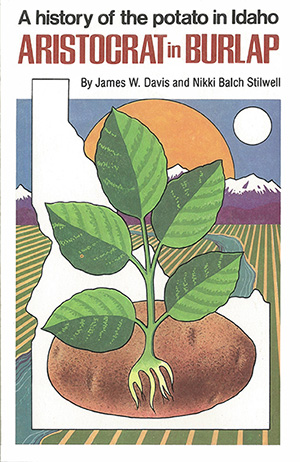When white men first came to Idaho to farm, the heavy work of soil preparation, planting, cultivation, and harvesting was done by the muscle power of men and horses. Women also helped out in the fields, but there was usually plenty of hard work to do around the farmhouse, as well.
The internal combustion engine produced the first technological revolution in the Idaho potato industry. Gasoline-powered farm tractors and motor trucks made their appearance about the same time in the early 1920s. Horses continued to play an important role for some time and teams were used for hauling after they had been replaced by the tractor for the heavy work of plowing, cultivating, and digging potatoes. In 1920, there were 41,000 acres of potatoes harvested in Idaho at an average yield of 108 hundredweight per acre.
The early potato fields were small by present-day standards. Many farmers grew less than ten acres, and anyone who had a 20-acre potato field was considered a big grower. At first, the same farm implements that had been used with horses were simply attached to the draw bar on the new steel-wheeled tractors and pulled through the field in the same way. Frequently, this arrangement required one person to drive the tractor and one to sit on the plow, cultivator, or whatever the machine happened to be. Growers soon found that they could handle larger acreages of potatoes with the tireless iron tractor. It would work from dawn to dusk and patiently remain out in the field all night waiting for the next day's work to begin.
Idaho's farm-to-market roads were primitive in those early days and in rainy or snowy weather they could become virtually impassable to automobiles and trucks. Growers from Idaho Falls frequently hauled potatoes to town in bobsleds during the snowy winter months with two or more teams providing the power. Early potato planting and harvesting machines were generally designed to do one row at a time. Row spacing in fields that required cultivation had to be wide enough for a horse to pass between rows, and this made multi-row implements awkward and impractical.
Tractors, trucks, and farm machinery grew larger. Each increase in horsepower and capacity gave the potato grower the ability to expand his potato acreage and produce a larger percentage of tubers in his rotation cycle.

